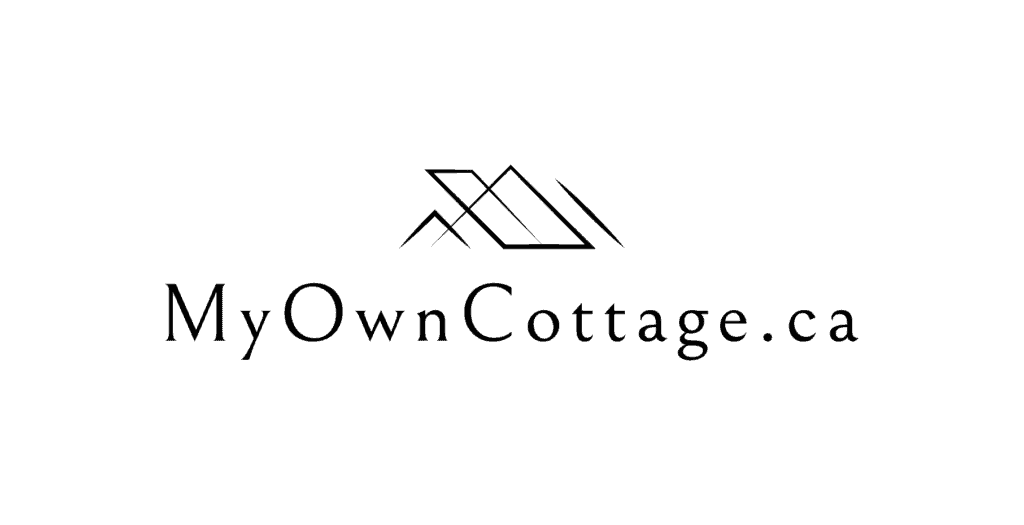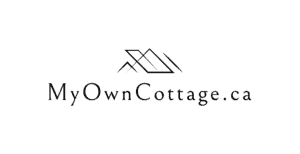Prefab Homes vs. Traditional Homes in Toronto
Compare Prefab Homes vs. Traditional Homes in Toronto!
Learn about the associated cost, construction time, energy efficiency, and design flexibility.
Discover why prefab homes are a smarter, faster, and more sustainable housing solution!
Home » Prefab Homes vs. Traditional Homes in Toronto
Prefab Homes or Traditional Homes in Toronto?
As the demand for affordable housing solutions grows in Toronto, homebuyers are faced with a crucial decision: Prefab Homes vs. Traditional Homes in Toronto.
With the rising costs of real estate and the increasing importance of energy efficiency, many are considering modular construction as an alternative to stick-built homes.
Differences Between Prefab Homes and Traditional Homes
This article explores the key differences between prefab homes and traditional homes.
We’ll be including construction time, quality control, and long-term costs.
We will also debunk common misconceptions about prefab housing and traditional homes.
Moreover, we’ll provide expert insights on why new modular homes are reshaping the real estate market in the Greater Toronto area.
Prefab Homes and Traditional Homes
The advantages of prefab homes in Toronto include faster construction timelines, cost savings, energy efficiency, and a reduced environmental impact.
These are significant benefits when compared to traditional home building methods.
But What Are Prefab Homes?
A prefab home is a modular structure built off-site in a controlled environment of a factory before being transported to the building site for final assembly.
These homes are constructed using advanced manufacturing processes that ensure quality control, superior quality, and energy efficiency.
Key characteristics of our own prefab homes Toronto collection:
- Built to meet or exceed the Ontario Building Code (OBC).
- Designed with high-quality building materials and mechanical systems.
- Available in various floor plans, including open-concept spaces and modern amenities.
- Reduced environmental impact due to less waste and optimized energy usage.
- Affordable housing option with lower upfront costs, efficient construction, and long-term savings on maintenance and energy bills.
What Are Traditional Homes?
Traditional homes, also known as stick-built homes, are constructed on-site using materials assembled by construction crews and general contractors.
The construction process is often impacted by weather, labor shortages, and unpredictable home renovations.
Traditional homes are often chosen for their customization options, allowing homeowners to create a custom home that suits their specific needs.
However, this level of customization comes with longer construction time and potentially higher final product costs.
Cost Breakdown: Which Offers the Best Price?
Initial Expenses
One of the primary advantages of prefab homes is their cost efficiency.
The prefab home cost is typically 20-30% lower than a traditional home due to streamlined production and quality control in a controlled environment.
Cost Factors for Prefab Homes
- Lower labor costs: Since the home is built in a factory-controlled environment, labor costs are significantly reduced.
- Efficient use of building materials: Unlike traditional construction, prefab homes generate less waste.
- Faster build time: The ability to construct most of the home off-site reduces delays, cutting down on overall construction time.
Cost Factors for Traditional Homes
- Expensive labor: General Contractors and laborers charge per hour, and unexpected issues can increase costs.
- Material waste: On-site construction often leads to excess material waste, adding to overall expenses.
- Longer timelines: Weather conditions and labor shortages can delay projects, increasing costs.
Overall Long-Term Costs
Prefab homes offer significant savings over time due to:
- Higher energy efficiency, reducing heating and cooling expenses.
- Lower maintenance costs due to factory quality control.
- Durability and superior quality of modular buildings, ensuring longer lifespan.
Conversely, traditional homes may require more repairs and upgrades.
Unfortunately, this is due to older construction methods, higher labor costs for home renovations, and potential inefficiencies in mechanical systems.
Common Misconceptions About Prefab Homes
Many people hesitate to invest in modular construction due to misconceptions about Prefab Homes vs. Traditional Homes in Toronto.
Let’s address some of the most common myths:
❌ Prefab homes are low quality.
✅ Modern modular home builders adhere to stringent Building Code regulations and quality control measures, producing superior quality homes.
❌ Prefab homes lack customization.
✅ Homeowners can choose from various House Plans, plan designs, and custom home options to create a new home that suits their specific needs.
❌ Prefab homes are only for rural areas.
✅ Prefab homes are increasingly being used for infill housing, garden suites, and Accessory Dwelling Units in the City of Toronto.
Modular Construction vs. Traditional Homes
Prefab Homes
The prefab home construction process in Toronto involves precision engineering, off-site manufacturing, and quick on-site assembly,
This modular construction process follows a precise building process in a controlled environment:
- Design process: Homeowners work with Project Managers to finalize floor plans and interior design.
- Manufacturing process: The home is built indoors using high-quality materials, ensuring quality control.
- Transportation & Assembly: The modular house is delivered to the construction site and installed in a matter of days.
Traditional Homes
The stick-built process involves multiple steps, often leading to longer construction time:
- Site preparation & foundation work
- Framing, roofing, and mechanical installations
- Final product completion, including flooring and painting
Unfortunately, delays due to weather, labor shortages, and material availability make this process more unpredictable.
Prefab Home Design: Customization & Floor Plans
Modern prefab house designs offer a range of house plans, including:
- Open-concept spaces for a modern aesthetic
- Guesthouses, vacation homes, and second-story additions
- Sustainable Passive House designs with superior indoor air quality
Environmental Impact
As sustainability becomes a priority for homebuyers and builders in Toronto, understanding the environmental impact of prefab and traditional homes is crucial.
Each construction method has its ecological footprint, energy efficiency factors, and material usage patterns.
These affect both the environment and long-term sustainability.
Prefab Homes Energy Efficiency and Carbon Footprint
These homes are typically built in a controlled factory setting, which minimizes material waste and optimizes resource use.
The tightly regulated manufacturing process ensures high insulation standards, resulting in better energy efficiency and lower heating and cooling costs.
Many prefab homes incorporate passive house principles, reducing reliance on fossil fuels.
Traditional Homes Energy Efficiency and Carbon Footprint
The on-site construction of traditional homes often leads to more energy waste due to prolonged building times, inefficient use of materials, and exposure to weather conditions.
Construction sites also generate significant CO₂ emissions from heavy machinery and transportation of materials.
Prefab Homes Material Waste and Sustainability
Factories producing prefab homes can streamline production and repurpose leftover materials for other projects, drastically reducing waste.
Many manufacturers use eco-friendly or recycled materials, further lessening the impact on the environment.
Traditional Homes Material Waste and Sustainability
Due to the on-site nature of construction, waste generation is significantly higher.
Materials like wood, drywall, and concrete are often discarded inefficiently, contributing to landfills and environmental degradation.
Financing Options for Prefab Homes in the GTA
Prefab homes in the Greater Toronto Area (GTA) are becoming an attractive alternative to traditional housing due to affordability and efficiency.
However, financing these homes can be slightly different from traditional mortgage structures.
Here’s what potential buyers need to know.
1. Mortgage Financing for Prefab Homes
Unlike conventional homes, prefab homes often require a specialized mortgage due to their unique construction and delivery process.
- Construction Loans: Many prefab homeowners in Toronto secure construction loans, which provide incremental funding as different stages of the home are completed. Once construction is finalized, the loan can be converted into a traditional mortgage.
- Completion Mortgages: Some prefab manufacturers work with lenders who offer completion mortgages, meaning buyers only need to provide a deposit, and the remaining amount is financed upon move-in.
2. Loan Eligibility and Requirements
- Land Ownership: Banks typically require buyers to own the land before approving a prefab home loan.
- Appraisal Process: Since prefab homes appreciate differently than traditional homes, lenders may require an independent property appraisal before approval.
- Insurance Considerations: Lenders often require specific home insurance for prefab structures, ensuring coverage during transportation and installation.
3. Government Incentives and Grants
Homeowners in Toronto can take advantage of various grants and rebates to help offset costs.
- CMHC Green Home Program: Offers rebates for energy-efficient prefab homes.
- First-Time Home Buyer Incentives: Buyers in the GTA may qualify for federal and provincial tax credits and incentives.
- Ontario Energy Rebates: Prefab homes with Energy Star-rated appliances and solar integration may be eligible for additional rebates.
4. Alternative Financing Options
- Personal Loans: For smaller prefab homes or additions like garden suites, personal loans can be a viable alternative.
- Developer Financing: Some prefab manufacturers offer in-house financing with flexible payment plans.
Is a Prefab Home in Toronto Right for You?
Choosing between Prefab Homes vs. Traditional Homes in Toronto depends on your priorities.
If you value:
✅ Shorter construction time
✅ Affordable housing options
✅ Energy efficiency & sustainability
✅ High-quality, customizable designs
Then a new modular home may be the best option for you.
As the housing market continues to evolve, modular housing initiatives and supportive housing projects will play a critical role in Toronto’s real estate market.
Solutions for Building Prefab Homes in Toronto
Would you like to explore modular home additions or receive an exclusive offer?
Contact our project manager today for the best price on your new home!
For convenience, you can also simply fill out the form below and we’ll get back to you soon!

